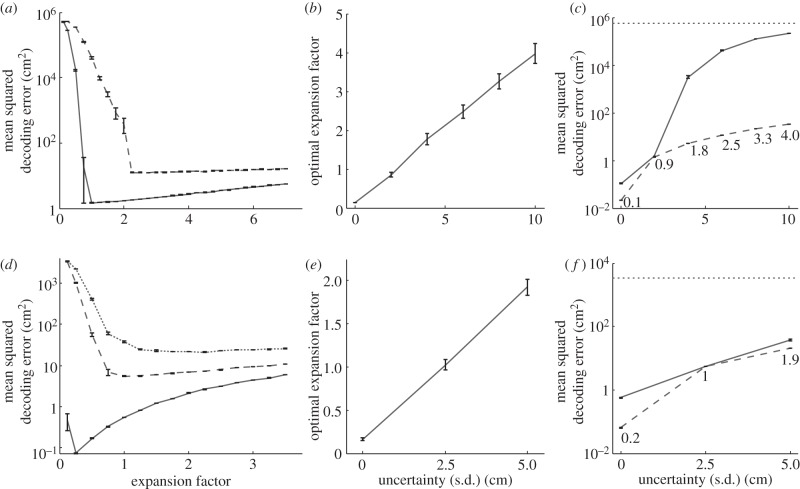Figure 4.
Expansion of a grid system is an optimal response to spatial uncertainty. (a) Mean squared decoding error on an 18 m track in grid systems subjected to varying expansion, under low uncertainty (s.d. 2 cm; solid line) and higher uncertainty (s.d. 6 cm; dashed line). For each level of uncertainty, there is an optimal expansion factor that minimizes decoding error, and grid scale expansions smaller or larger than this will result in greater errors. (b) The mean optimal expansion factor is greater for higher levels of uncertainty; this relationship appears linear. (c) Mean squared decoding error for baseline (solid line) and optimally expanded (dashed line) grid systems, and for performance at chance (dotted line). Labels indicate mean optimal expansion. (d), (e) and (f) show simulations in a two-dimensional 1 m2 environment and are equivalent to (a), (b) and (c), respectively. Error bars are the s.e.m. of 10 runs of the simulation per set of conditions, each consisting of 1000 decodes of random locations.

